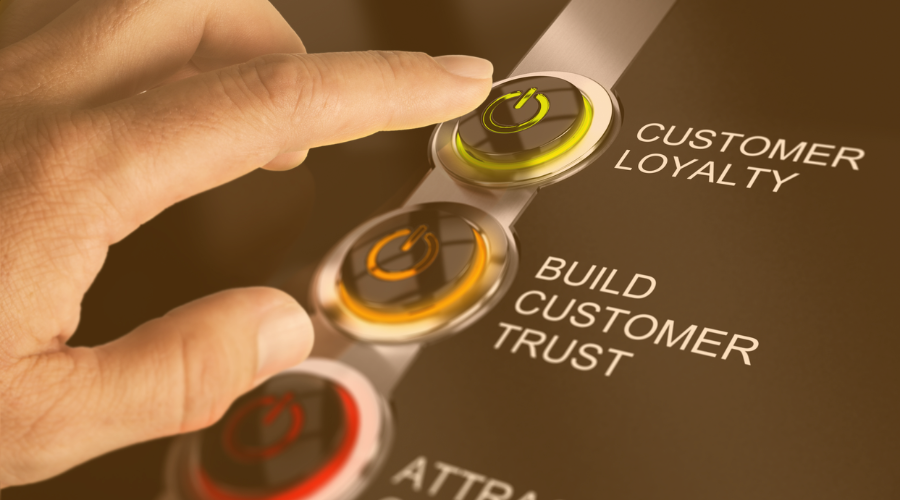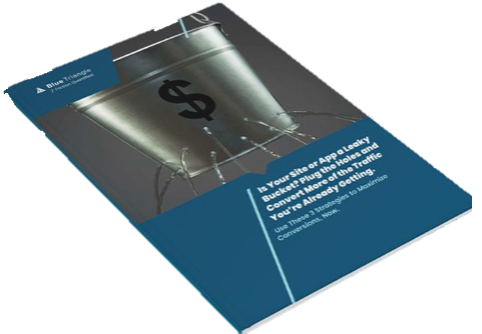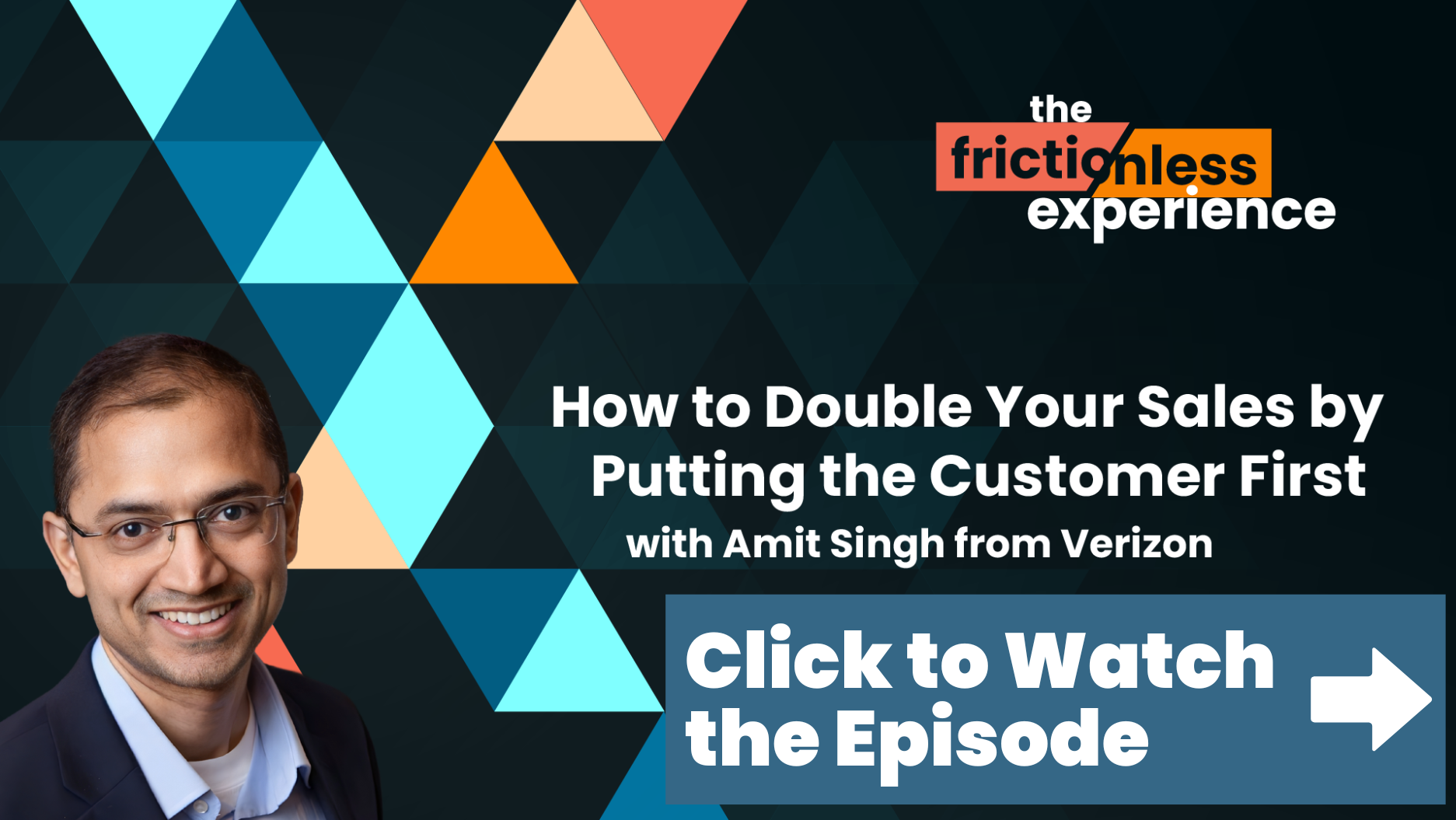Why Earning Customer Trust is the First Step to Digital Success in B2B Purchases
Use these 5 principles to earn the right to transact and keep transacting through the customer's lifecycle.
In today's digital-first world, people enjoy the freedom to transact with companies without going into a store or picking up a phone to talk to a customer service rep.
But that doesn't mean winning a customer's business via your digital channels is a slam dunk. Far from it.
Building long-term customer relationships, especially in business-to-business (B2B), starts with earning the trust of the customer to make that first purchase commitment.
"You can drive traffic to your site all day long, but if you don't earn your right, then why are they even there in the first place? And that's about building that good experience when we talk about those journeys," noted Amit Singh, Associate Vice President of B2B Distribution Transformation and Digital Adoption at Verizon, during an interview with me and Nick Paladino on a recent episode of The Frictionless Experience podcast.
Listen to the episode below, on The Frictionless Experience website, or your favorite podcast app player.
Amit noted that in B2B, where, for example, Verizon sells to all types of businesses, from small businesses, mid-market, and large corporate enterprises to public sector organizations, the purchase process often extends over months, and the customer relationship can extend over many years. Which means customers will navigate many different journeys over the life of their relationship with a company.
How B2B and B2C Purchases Differ, and Yet Are Alike
In the podcast interview, Amit noted that while B2B buyers often have more patience, the product and the needs are more complex, and so is their journey. As much as 80% of the digital experiences Verizon offers use the same functionality for both B2B and B2C (business-to-consumer) audiences. Which makes it easier to manage and maintain frictionless digital experiences.
Yet, that also means 20% of the functionality is uniquely built to meet the needs of B2B audiences, such as adding and managing multiple devices across a company's employees. And friction in these journeys can be even costlier since the value of large businesses is exponentially greater than that of a consumer over their customer lifetime.
In my book, An Audience of One, I wrote about the differences and commonalities in business and consumer journeys and how you can use this understanding to build frictionless journeys that convert successfully.
"These differences result in far longer purchase processes for businesses, often lasting many weeks or months. Decisions can take circuitous routes, stall, suddenly increase in speed, and sometimes end unexpectedly without a purchase," I noted in the book.
How B2B Purchase Decisions are Unique
How business purchases are made is distinctly different from how consumer purchases are made:
- More people. Consumer purchases are often made with just one or two decision-makers, but that's rarely the case with business purchases. Most business purchases involve multiple decision-makers, influencers, evaluators, and negotiators who must agree before making a purchase.
- More risk. Consumer purchases generally affect only a person or, at most, a single household. Bad consumer purchases, such as choosing not-so-tasty bargain brand mac' n' cheese, generally result in short-term, relatively minor problems. On the other hand, business purchases impact entire departments or companies and can significantly impact business outcomes. Making a bad purchase decision in the business world can result in the loss of people's jobs or an entire company's fortunes.
- Bigger investment. Most household purchases involve small amounts, often less than $100. Businesses routinely make purchases costing thousands, hundreds of thousands, or even millions of dollars.
- Considered purchase. Consumers often make impulse purchases, such as which fast-food restaurant to grab lunch from or buying a clearance-priced blouse while browsing in a store. Few business purchases are impulse purchases. Nearly all business purchases require extensive research, evaluation, and even reference checking before they can be completed.
How B2B Purchase Decisions are Similar
- B2B is people, too. In the end, businesses don't make purchases; people do. They may be spending the company's money and purchasing products and solutions that impact the corporation, but the people involved still need to decide to buy.
- Emotional purchases. Despite the rigor around business purchases, in the end, the people involved can buy for emotional reasons and justify their purchases logically, just like they do when making consumer purchases.
- Personalized experiences. Business buyers and influencers prefer personalized experiences and conversations based on their specific business, industry, and the role of the person involved. They also demand frictionless experiences as consumers and can purchase from a competitor just one click away.
Note: Adapted from An Audience of One, McGraw-Hill, Copyright © 2022 by Jamie Turner and Charles Moxley
Friction in the B2B Customer Journey Kills Conversions, Trust and Loyalty
Despite the differences between B2B and B2C buying experiences, neither audience will tolerate friction in the digital purchase experience. Friction is characterized by anything that slows or prevents a prospect from completing their goal for that visit to your website or mobile app.
Slow-loading pages, non-working components, shifting content, poorly or non-displaying content, and confusing jargon are all examples of friction that can stop a customer from completing their digital journey.
If you fail to create frictionless journeys, it can cost your company dearly, not just in revenue from lost conversions but also in the cost of lost customer trust and loyalty, which often takes years to build.
Amit notes that for B2B buyers, you must make it easy for them to learn, buy, get, use, and transact during their entire customer lifecycle. He also notes that creating a good digital experience starts before the prospective customer ever lands on your website.
"It really starts wherever they have the first consideration of the category that we serve. From there, they go through the entire LBGUB (learn, buy, get, use, pay) journey. Every moment is an experience moment, is a moment to reduce friction and create experiences that can be multiplicative as you grow further," noted Amit during our conversation.
5 Steps to Building Frictionless B2B Digital Experiences
If you've read this far, then you clearly buy into the notion that B2B buyers demand frictionless experiences, and if you don't remove the friction in their digital journeys, you will experience a loss of conversions, revenue, trust, and loyalty.
So, how do you tackle B2B frictionless experiences?
Amit offered these 5 recommendations:
1. Get Close to Your Customers.
Really close. The more time you invest talking to customers and listening to customer calls (when recorded via Gong.io or similar tools), the more you'll understand their challenges and how your brand can help them solve those challenges.
In fact, Amit noted that he sets aside 10% of his time every week to listen to customers. These insights have helped him build better digital experiences that have helped his team grow B2B revenue via digital experiences "from low-single-digits to a third of digital revenue" for Verizon.
Amit noted that when he first joined the company, "one week out of the month, we would spend time in the call center, literally working out of there even if you had no other reason to interact with them. By just being there, there was so much osmosis happening, learning about the business and the customer."
2. Leverage Data from Customer Journeys.
Enterprise B2B companies leverage multiple analytics and business intelligence tools that track every interaction and step in the customer journey. The challenge lies in leveraging all that data.
Amit noted that he also sets aside 10% of his time each week just to review the data and insights the company collects. "We use a lot of data to measure whether page load, digital reliability, shipping and delivery, end-to-end order time, etc, to make sure that we can meet the customer needs and expectations," he noted.
Many tools are available today to track every customer's journey through your digital properties, allowing you to analyze different paths users take, including both successful and unsuccessful journeys.
Analyzing journeys from cohorts of different types of users—returning vs. first-time visitors, customers vs. prospects, traffic via paid media vs. organic traffic, customers with multiple vs. single items in their baskets—yield insights that can help you optimize digital journeys that both improve conversion rates and also increases average order values (AOV).
Digital teams should leverage tools that go beyond uncovering friction to quantify which friction points are costing the most in lost revenue so you can focus efforts on fixing the costliest friction points. This is especially critical for large-scale sites and apps that may have hundreds or thousands of friction points across their digital properties. With limited resources, it's critical to focus on removing friction that will produce the greatest return on investment (ROI).
3. Stitch Together Journeys Across Channels and Devices.
To uncover all of the friction points in digital journeys, companies must view the entire journey as a single event and not a series of disconnected users and engagements.
Most companies make sales and customer service agents available via telephone and chat. Larger purchases often include dedicated reps, with whom the customer may interact with digitally, via phone or even in-person. And some B2B companies operate physical sales and service locations where customers can complete some steps in person.
Further complicating the picture are the multiple digital devices customers use, including laptop computers, tablets, and smartphones. Even smartphone interactions can span across both mobile web and mobile app environments.
Yet analytics tools may not capture all the information from all of the steps or accurately distinguish between journeys crossing devices (e.g., mobile app calls a mobile web page). The more you can stitch together customer journeys, the more likely you'll uncover the unique friction points in each channel and device, and the greater your likelihood of delivering frictionless experiences.
4. Deliver Accuracy in Every Step of the Journey.
Nothing creates friction for customers more than presenting confusing or inaccurate information during their digital journey.
Amit offered examples of where inaccuracy creates friction:
"I believe in simply meeting basic expectations first. So never have issues where you quote one amount, and on the next page, the next step changes because maybe the discounts weren't shown or some different consideration caused it to change."
The inability to link customer data across tools and departments can also lead to inaccurate communications. A friend received an email from a company after placing an item in her cart but failing to complete the order. Yet the discount code they sent her to convince her to return and complete the purchase was excluded from the item in her cart.
Amit commented about this type of inaccuracy related to eligibility rules in our discussion. "It creates a question of decision confidence, especially in any costlier purchase. If it's a very small purchase, then it may not have as much impact. But given B2B and, in general, larger subscription-based paradigms, the errors can be (a much bigger) amount, so accuracy in these areas is critical."
5. Ensure Clear and Transparent Communication Throughout the Journey.
When a buyer receives confusing or unclear instructions during their digital journey, it creates friction that can stop them from completing their transaction.
Amit noted the importance of providing clear, confidence-building messages during every step of the journey to remove any doubts or confusion. He likened it to Google Maps, which confirms, even after a re-route, that "you are traveling on the best route." A simple confirmation message creates confidence.
He also suggests, "Use the technology and data so when somebody is considering a purchase, having reinforcing data, like who else has bought, how many people have bought those. Am I looking at the right item? I think that provides discoverability assistance that is technology-driven, that makes a lot of difference."
Bottom line: Businesses must earn the right to take customers from discovery to purchase and keep them purchasing for many years. Prioritize removing friction from your digital experiences by adopting these five practices, and earning this right and driving B2B revenue via your digital channels will become a slam dunk.

During the holiday rush, every shopper matters
Optimize the customer journey before the eCommerce event of the year.

.jpg)



